Maltese Dog Overview: Traits, Care, and Unique Qualities
The Maltese is a small toy dog known for its striking white coat and affectionate nature. This breed offers a charming companion for those looking for a gentle, low-shedding pet that fits well into many living spaces. Despite their small size, Maltese dogs are alert and can be quite brave, making them good watchdogs.
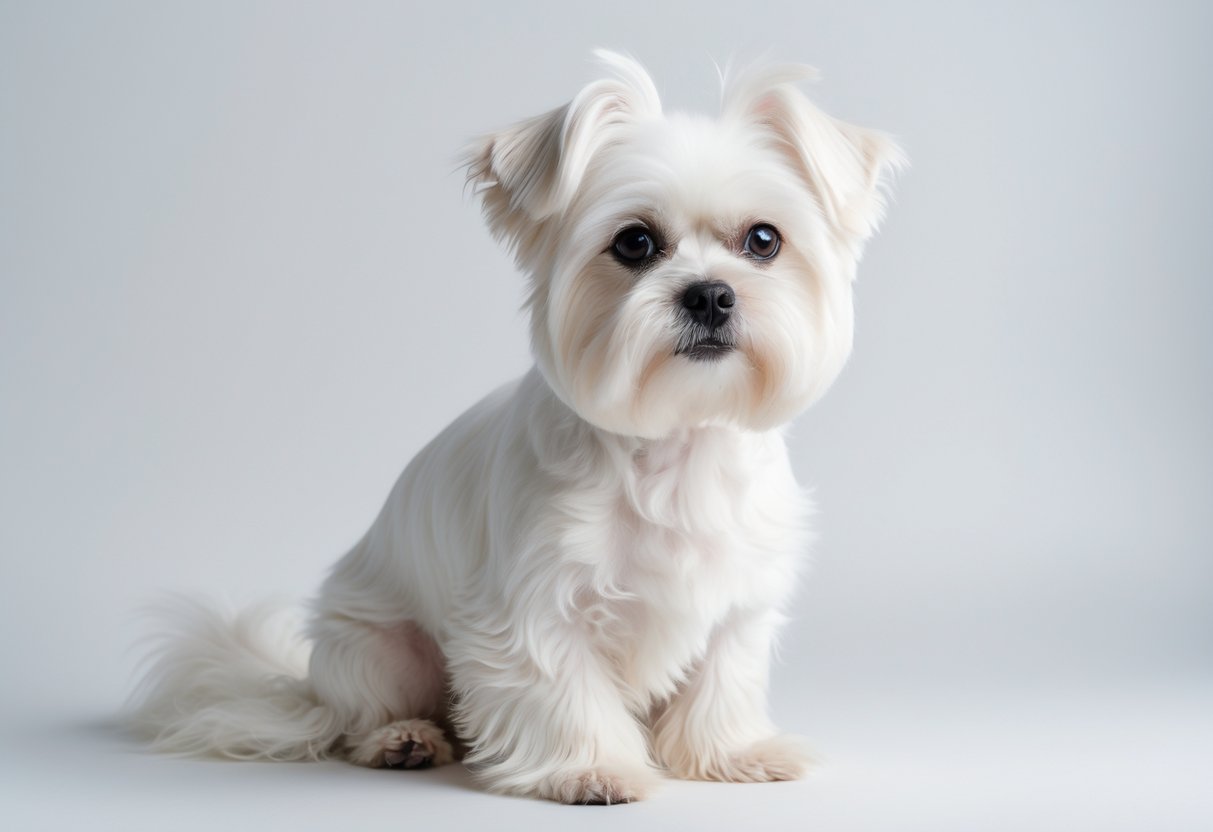
They need regular grooming to keep their silky fur in top shape and require daily exercise to stay healthy and happy. Their personality is friendly but can be somewhat stubborn during training, so early socialization is important to help them thrive in different environments.
Key Takeways
- The Maltese is a small, affectionate dog with a distinctive white coat.
- Regular grooming and daily exercise are important for their well-being.
- Early training and socialization improve their behavior and confidence.
What Is a Maltese Dog?
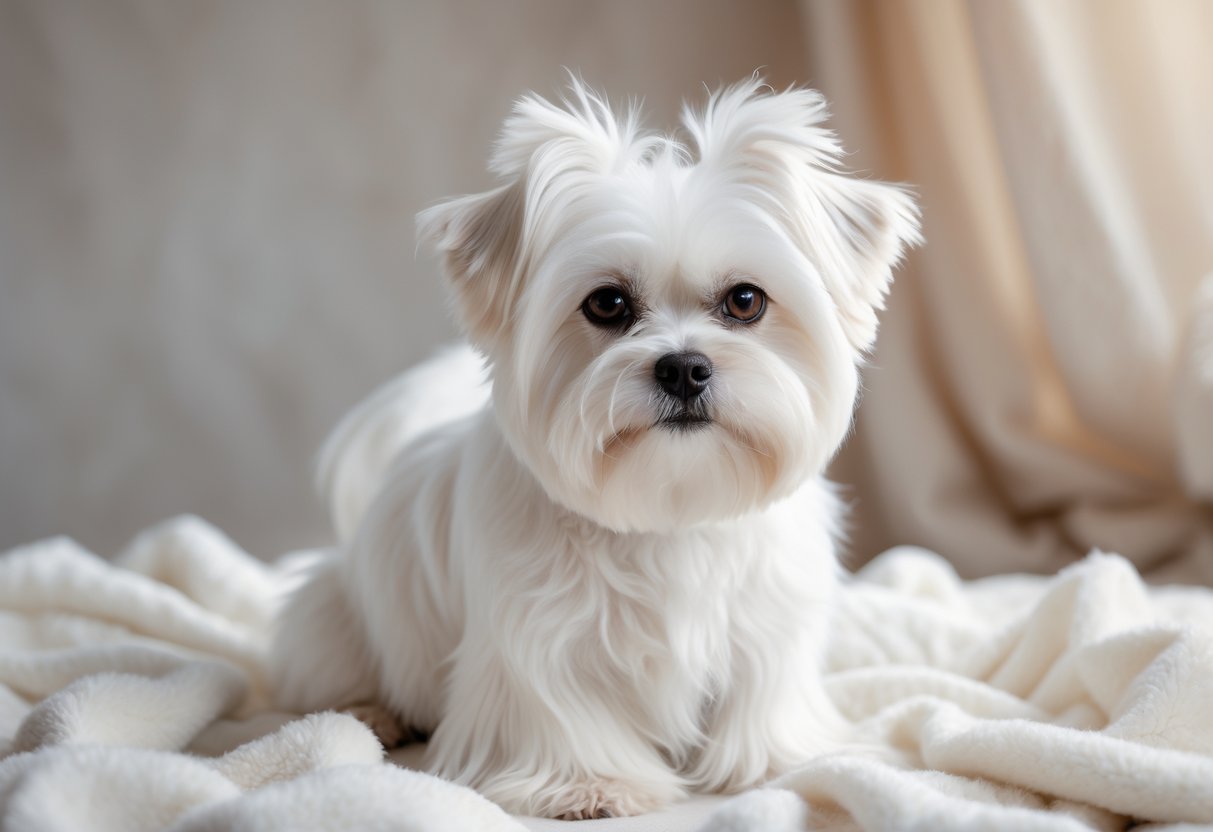
The Maltese dog is a small toy breed known for its elegant white coat and friendly nature. It is a companion dog prized for its size, temperament, and history. Below are details about its main traits, official recognition, and role as a lapdog.
Key Breed Traits
The Maltese dog is a tiny breed, typically weighing under seven pounds and standing 7 to 10 inches tall. It has a long, straight, and silky white coat that requires regular grooming to prevent tangles. The breed is known for being affectionate and alert, making it a good companion for families, singles, and seniors.
Maltese dogs are intelligent and playful but also gentle. They tend to form strong bonds with their owners and enjoy spending time close to people. This breed usually gets along well with children, other dogs, and cats if socialized early.
| Trait | Description |
|---|---|
| Size | 6-9 pounds, 7-10 inches tall |
| Coat | Long, silky, white |
| Temperament | Affectionate, alert, playful |
| Lifespan | 12-15 years |
AKC and Breed Recognition
The American Kennel Club (AKC) officially recognizes the Maltese as a distinct toy breed. It is included in the Toy Group due to its size and companionship qualities. The breed’s history dates back centuries, and the AKC highlights its charming personality and graceful appearance.
The AKC sets breed standards for the Maltese, focusing on physical features like its coat, size, and movement. These standards help breeders maintain the breed’s unique characteristics. The AKC also hosts events such as conformation shows where Maltese dogs compete based on these guidelines.
Role as a Lapdog
The Maltese has long been known as a classic lapdog. Its small size and affectionate nature make it ideal for staying in a person’s lap or close by. Historically, it has been a companion to royalty and commoners alike, prized for being both gentle and alert.
As a lapdog, the Maltese thrives on human interaction. The breed is happiest when it can be near its owner, making it less suited for households where it might be left alone for long periods. Its calm yet playful temperament helps it adapt well to indoor living and close companionship.
Distinctive Appearance
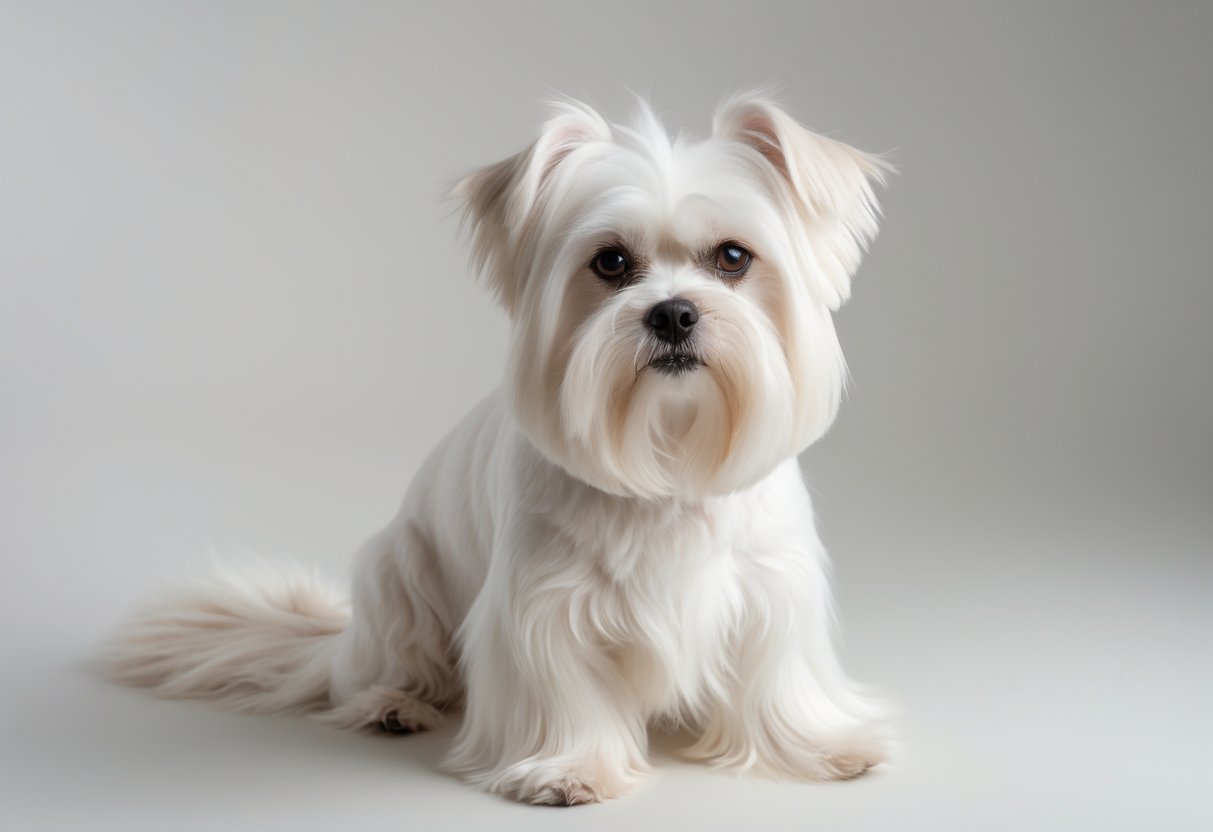
The Maltese is easily recognized for its elegant and graceful look. Its most notable features include a long, silky coat, a small and compact body, and distinct color traits that create a refined appearance. These qualities set the breed apart from many others.
Long Coat and Minimal Shedding
The Maltese has a long, straight, and silky coat that flows smoothly without curls or waves. This coat grows continuously and requires daily brushing to avoid tangles and mats. Regular grooming helps keep the hair healthy and shiny.
Despite its length, the breed sheds very little. This minimal shedding makes the Maltese a popular choice for those with allergies or sensitivity to dog hair. Bathing every 2-3 weeks also helps maintain the coat’s softness and cleanliness.
Color and Markings
The typical Maltese coat is pure white, giving it a striking and elegant look. Some dogs may have slight lemon or tan markings around the ears, but these are generally rare.
The Maltese has a distinctive black nose and dark, expressive eyes that contrast with its light coat. These facial features contribute to the breed’s alert and lively expression.
Size and Build
Maltese dogs are small but sturdy. They usually stand between 8 and 10 inches tall at the shoulder and weigh between 4 to 7 pounds.
Their build is compact with a slightly rounded skull and a well-proportioned body. The Maltese has a fine bone structure without being fragile, which allows for agility and graceful movement. Their small size makes them well-suited for apartment living.
Temperament and Personality
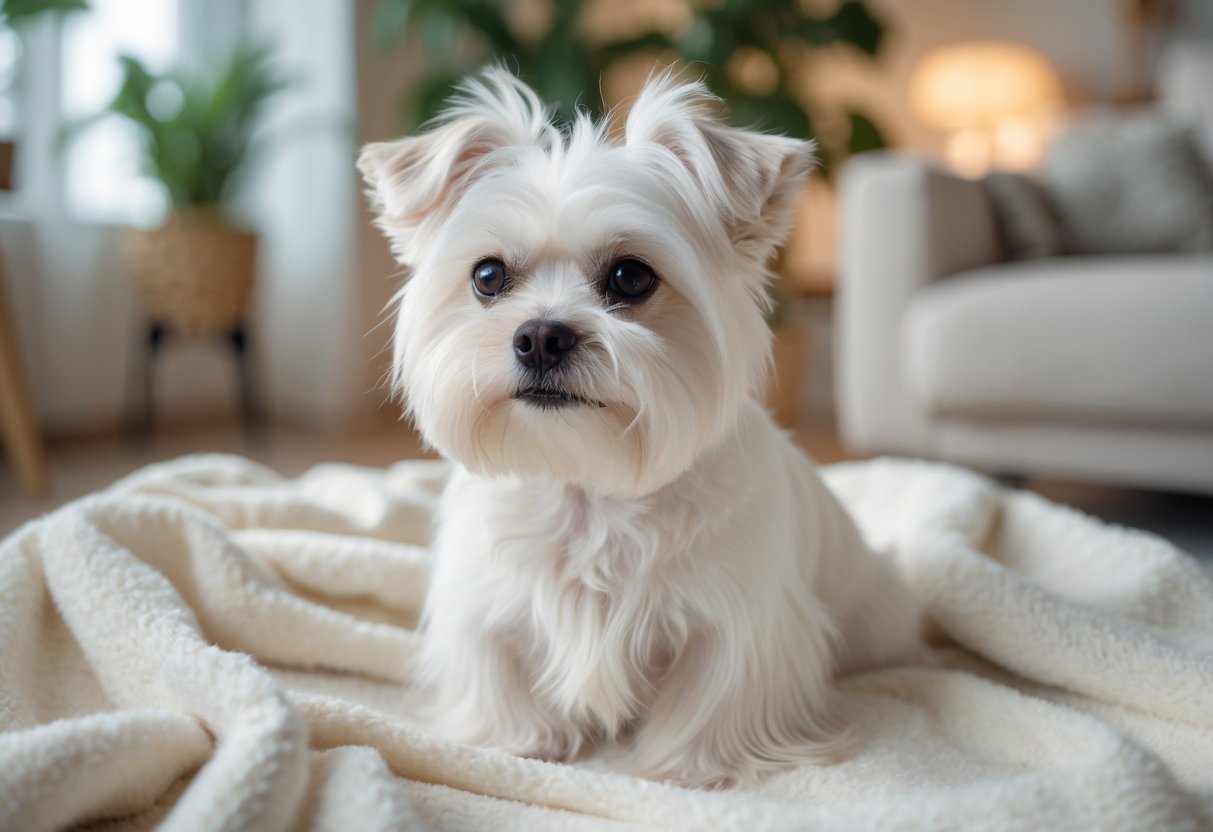
The Maltese is known for being lively and loving with a bold, confident nature. It thrives on close contact with its owners and responds well to gentle training. This dog’s personality fits many lifestyles, especially those involving indoor living and close family ties.
Affection and Companionship
Maltese are affectionate lapdogs that enjoy spending time cuddling with their owners. They form strong bonds and show loyalty through gentle attention and calm behavior. This breed often seeks comfort by sitting on laps or staying near family members.
Their affection is balanced by bursts of playful energy. They enjoy interactive moments but also appreciate quiet time. Maltese thrive on positive interaction and respond well to consistent, kind care.
Adaptability to Families and Seniors
Maltese dogs suit a range of households. They are gentle and patient enough for families with children who understand how to handle small pets. Their small size and calm demeanor make them a good match for elderly owners.
This breed adapts well to apartment living and requires moderate exercise. Maltese do well with owners who can offer regular companionship without large amounts of physical activity. Their low-shedding coat and manageable size add to their appeal in smaller homes.
Socialization and Behavior
Maltese are generally friendly with other pets and people when socialized early. Without proper interaction, they may become wary or vocal, showing watchdog tendencies despite their size. Early training helps prevent overprotectiveness and promotes good manners.
They are intelligent and respond best to consistent, gentle guidance. Maltese enjoy learning new commands but can be stubborn if pushed too hard. Socialization supports a balanced temperament, making them well-mannered family members.
Exercise and Daily Activity
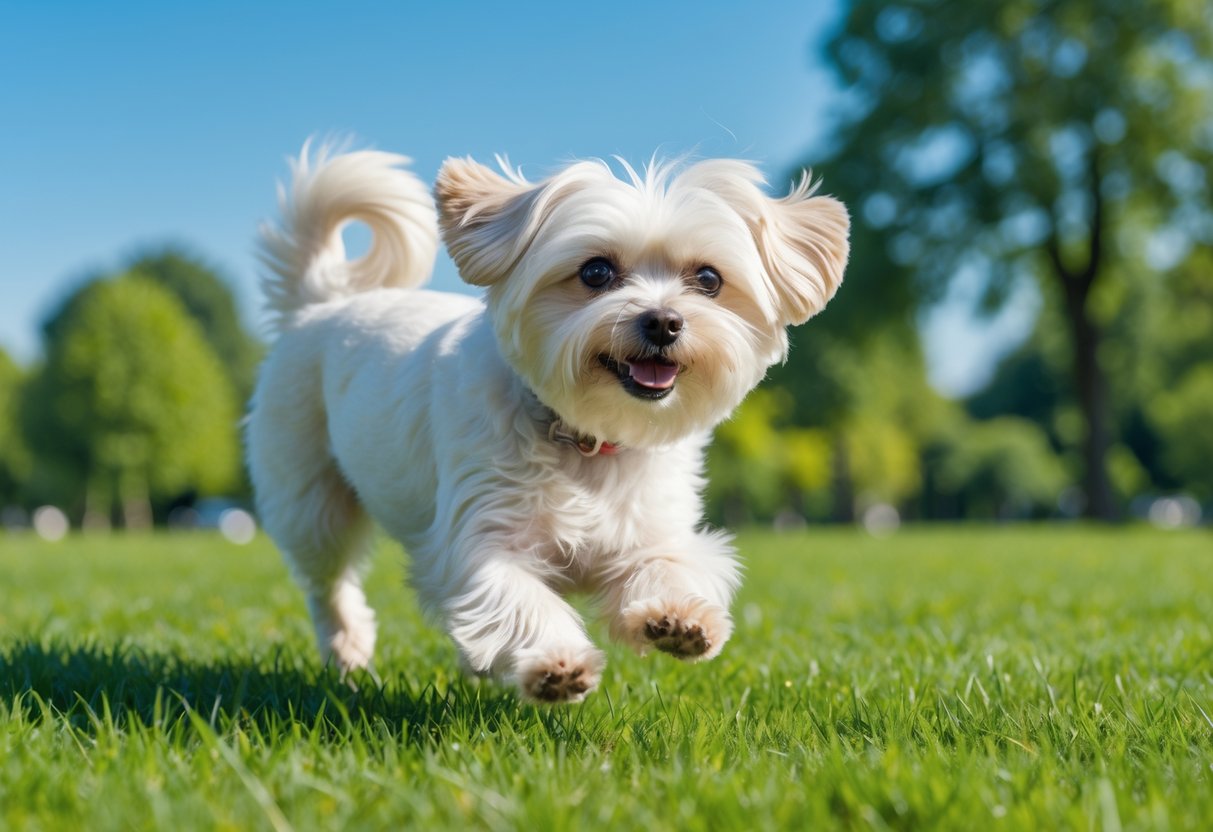
Maltese dogs need consistent daily activity to stay healthy both physically and mentally. Their exercise should balance gentle movement and stimulating play that suits their small size and energy levels.
Exercise Needs for Maltese
Maltese dogs generally require about 30 to 45 minutes of exercise each day. This helps maintain their physical health and prevents boredom or behavioral problems.
Because of their small size, exercise should be moderate and not overly strenuous. Walking and light play are enough for most Maltese. Owners should adjust the activity level based on the dog’s age and health to avoid injury or exhaustion.
Regular exercise also supports emotional well-being. A well-exercised Maltese tends to be calmer and more responsive to training. Avoid long, intense sessions and watch for signs of tiredness like heavy panting or lagging.
Short Walks and Indoor Play
Daily short walks are key for a Maltese. They benefit from 20 to 30 minutes of walking, which can be split into two or more sessions. Walks offer new sights and smells, stimulating their senses.
Indoor play complements walking. Activities like fetch or gentle tug games provide physical exercise without leaving the home. This is helpful during bad weather or when outdoor time is limited.
A safe indoor space should allow the dog to move freely and engage in different play styles. Mixing indoor play with walks keeps the Maltese active and prevents monotony.
Mental Stimulation with Interactive Toys
Maltese dogs need mental challenges to stay sharp and content. Interactive toys that hide treats or require problem-solving engage their minds.
Toys like puzzle feeders or treat-dispensing balls encourage the dog to think and move simultaneously. This kind of mental stimulation can reduce destructive habits caused by boredom.
Owners should rotate toys regularly to keep interest high. Training sessions using toys also add mental enrichment while strengthening the bond between dog and owner.
Grooming and Coat Care
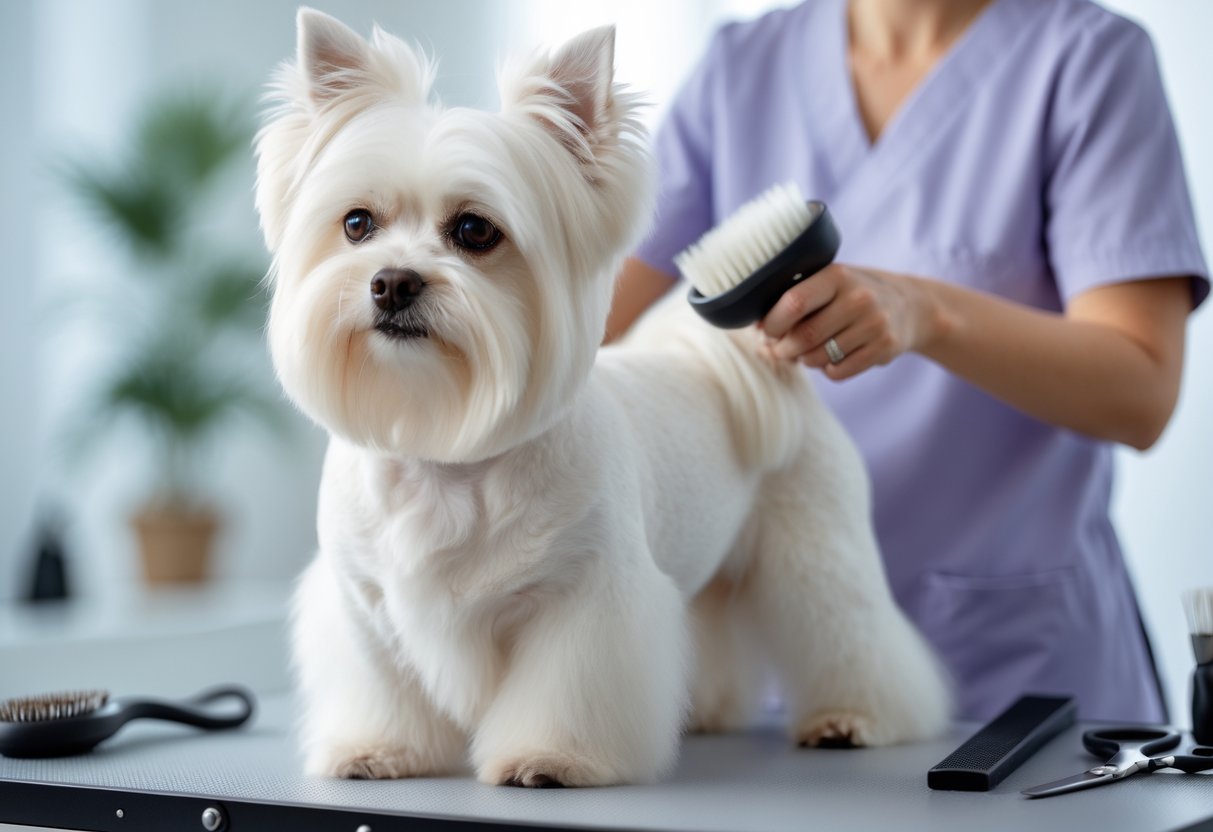
The Maltese has a long, silky coat that needs regular attention to stay clean and healthy. Grooming involves daily brushing, managing minimal shedding, and tips to keep the long coat free from tangles and mats. Proper care helps prevent skin problems and keeps the dog comfortable.
Daily Brushing Routine
Daily brushing is essential for a Maltese due to its fine, long coat. Using a soft bristle brush or a pin brush helps remove dirt and prevent tangles. Brushing should be gentle but thorough, covering the entire body, including behind the ears and under the legs where mats often form.
Brushing also helps distribute natural oils along the hair, keeping the coat shiny and healthy. It is best to brush the coat when it is dry to avoid breakage. Regular brushing reduces the chance of painful mats and makes bathing easier.
Managing Shedding
Maltese dogs have very little shedding compared to other breeds. Their single-layer coat grows continuously rather than shedding in large amounts. This means owners don’t need to worry about shedding hair around the house as much.
Even with minimal shedding, regular brushing helps to remove loose hairs before they fall. Bathing every 3 to 4 weeks also assists in keeping the coat clean and removing dead hair. Using a gentle shampoo designed for dogs maintains skin health and supports the coat’s texture.
Tips for Maintaining the Long Coat
Maintaining the long coat requires consistent care and the right tools. Frequent trimming around the eyes and paws helps keep the dog comfortable and prevents hair from irritating sensitive areas. Many owners choose professional grooming every 4 to 6 weeks to maintain the coat’s length and cleanliness.
To avoid mats, it is important to keep the coat dry and brushed after outdoor activities. A detangling spray can be useful for stubborn knots. Owners should also check for tear stains and clean the face regularly to keep the coat bright and healthy.
Training and Socialization
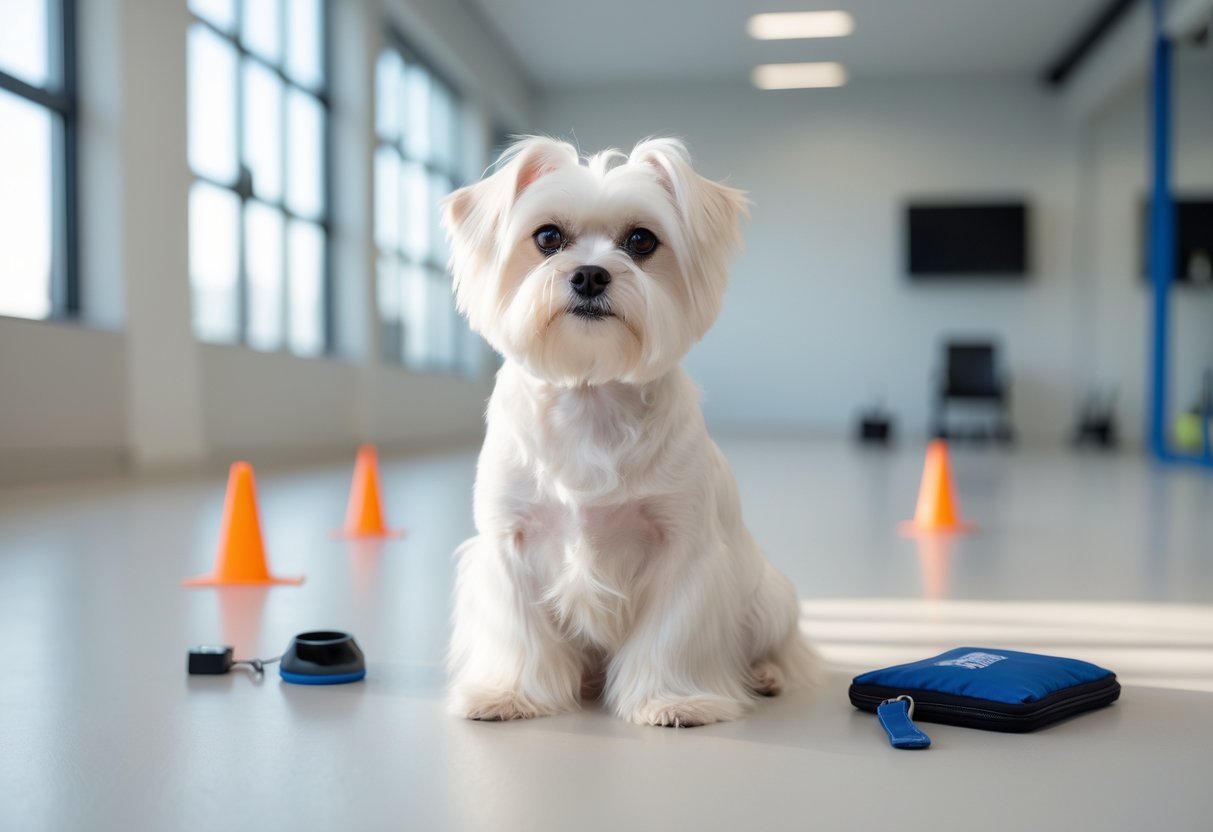
Training a Maltese requires clear steps to build good habits and confidence. Consistent rewards and calm patience help mold behavior. Early exposure to people and places sets the foundation for a well-adjusted dog.
Positive Reinforcement Methods
Positive reinforcement is key when training a Maltese. Rewarding good behavior with treats, praise, and affection encourages them to repeat it. This method avoids fear and builds trust between owner and dog.
Using short, frequent training sessions keeps the dog focused. Commands should be paired with clear verbal or hand signals to prevent confusion. Rewarding immediately after correct behavior strengthens learning.
Owners should also reward spontaneous good behavior outside training times. This includes simple acts like sitting calmly or not barking unnecessarily. Praise without treats, like petting or kind words, can be effective too.
Training Challenges and Tips
Maltese dogs can be stubborn or sensitive, requiring patience during training. They may take time to learn new commands, so rushing can cause frustration for both.
Keeping training sessions short—around 5 to 15 minutes—helps maintain focus. Consistency matters; the dog needs clear rules that do not change often to avoid confusion.
Using a crate can help with potty training and provide a safe space. Crates must be introduced gently to avoid stress. Leash training should begin indoors before moving outside for better control.
If problems persist, consulting a professional trainer can help address specific concerns early.
Early Socialization Importance
Introducing a Maltese puppy to different people, animals, and environments early is crucial. It reduces fear and aggression as they grow.
Socialization should begin after the puppy has all vaccinations. Gradual exposure includes meeting healthy dogs and calm strangers. This helps the dog become comfortable in new situations like parks or busy streets.
Proper socialization teaches the dog to respond calmly and reduces nuisance behaviors such as excessive barking or hiding. Controlled environments are best for early socializing to keep the puppy safe and healthy.
Health and Wellness
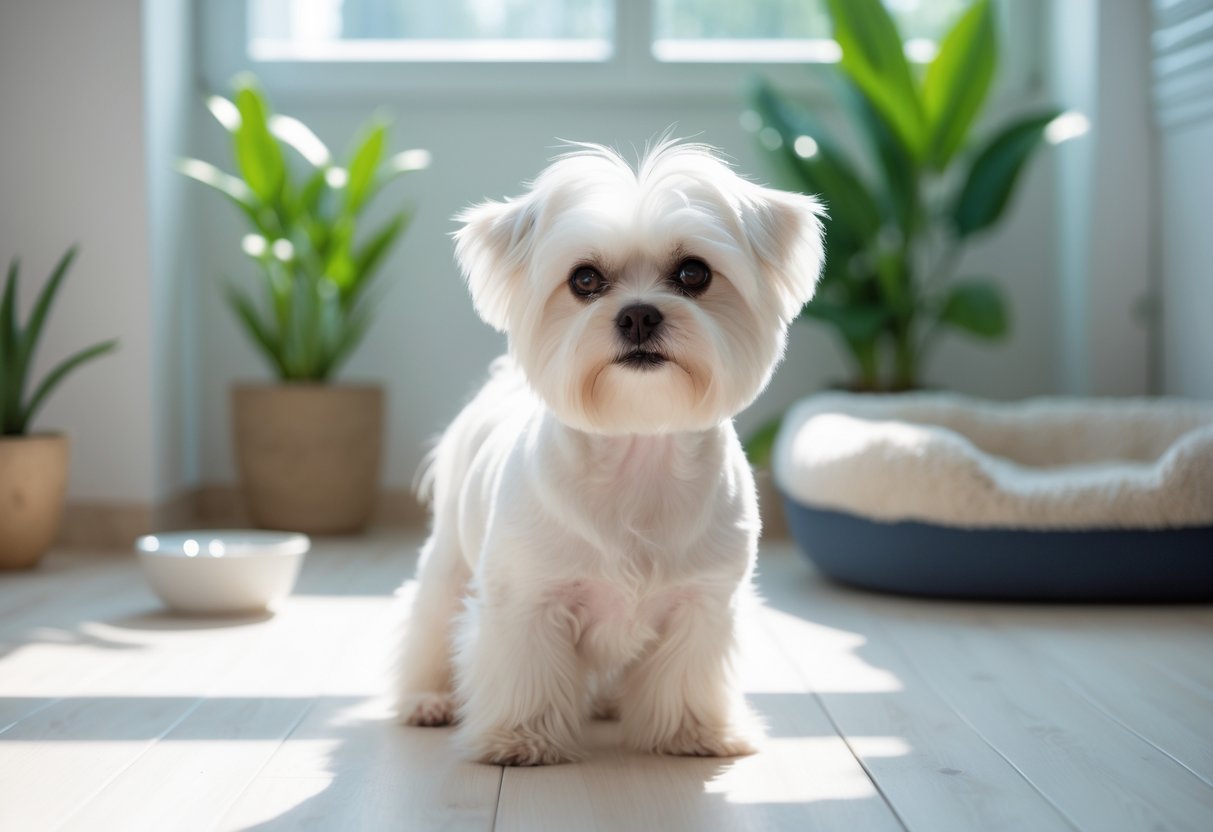
The Maltese dog is generally healthy but can face certain breed-specific health concerns. Regular vet visits and early detection are important for managing their health. Owners should also consider pet insurance to help cover costs related to these conditions.
Common Health Issues
Maltese dogs may develop patellar luxation, a condition where the kneecap moves out of place. This can cause limping or favoring one leg. It is often inherited and may lead to arthritis or other knee problems if untreated.
Heart problems like patent ductus arteriosus (PDA) can also occur. PDA is a birth defect where a blood vessel in the heart doesn’t close properly after birth. This condition can lead to heart failure if not corrected with surgery early in life.
Dental disease is another common issue. Maltese dogs often suffer from gum inflammation and tooth loss due to their small mouths. Daily tooth brushing and professional cleanings are necessary to prevent serious problems.
Patellar Luxation and Mobility
Patellar luxation is a frequent problem in Maltese dogs. It happens when one or both kneecaps slip out of their normal position. This condition may cause the dog to skip steps or hold a leg up.
In mild cases, patellar luxation may not cause pain, but it increases the risk of ligament tears and arthritis. If the condition worsens, surgery might be needed to realign the kneecap and restore mobility.
Owners should watch for signs like limping, stiffness, or reluctance to jump. Maintaining a healthy weight and avoiding high-impact activities can help reduce stress on the joints.
Progressive Retinal Atrophy
Progressive retinal atrophy (PRA) affects the eyes and leads to gradual vision loss. It is an inherited condition that starts with night blindness and eventually can cause total blindness.
Symptoms may not appear until middle age, so regular eye exams are important. There is no cure for PRA, but affected dogs can adjust well to vision loss with support and safety measures at home.
Breeders often test for PRA to reduce its occurrence in puppies. Owners should ask about health clearances when adopting a Maltese to avoid this inherited disease.
Living With a Maltese

Maltese dogs need a calm, safe space to live and plenty of attention. Their care involves daily grooming, regular exercise, and health checkups. They thrive best where their social and physical needs are met consistently.
Home Environment Suitability
Maltese dogs are small and adaptable, making them well-suited for apartment living or homes with limited space. They do not require a large yard but benefit from a quiet, secure environment where they feel safe.
Because they have long, silky coats, their living area should be clean and free from dirt to avoid mats and tangles. Regular grooming tools should be kept handy.
Their size makes them fragile, so homes with very young children should supervise interactions closely to prevent accidental injury.
Companionship and Indoor Lifestyle
Maltese dogs are highly social and bond closely with their owners. They are happiest indoors, where they can be near family most of the time and avoid extreme weather.
Daily indoor play and 20–30 minute walks help them use energy healthily and stay mentally engaged. Puzzle toys or gentle agility activities inside the home are good for stimulation.
They can suffer from separation anxiety if left alone too long. Owners should provide consistent companionship or arrange alternatives like dog sitters or pet daycare.
Insurance and Veterinary Needs
Maltese require routine veterinary care to monitor common issues like dental disease, luxating patella, and tear staining. Regular dental cleanings are important to prevent serious oral health problems.
Pet insurance is recommended to offset costs of potential treatments. It can cover accidents, illnesses, or hereditary conditions common in the breed.
Owners should establish a vaccination schedule and maintain parasite prevention. Early vet visits help catch any health concerns before they worsen, ensuring a longer, healthier life for the dog.
Frequently Asked Questions
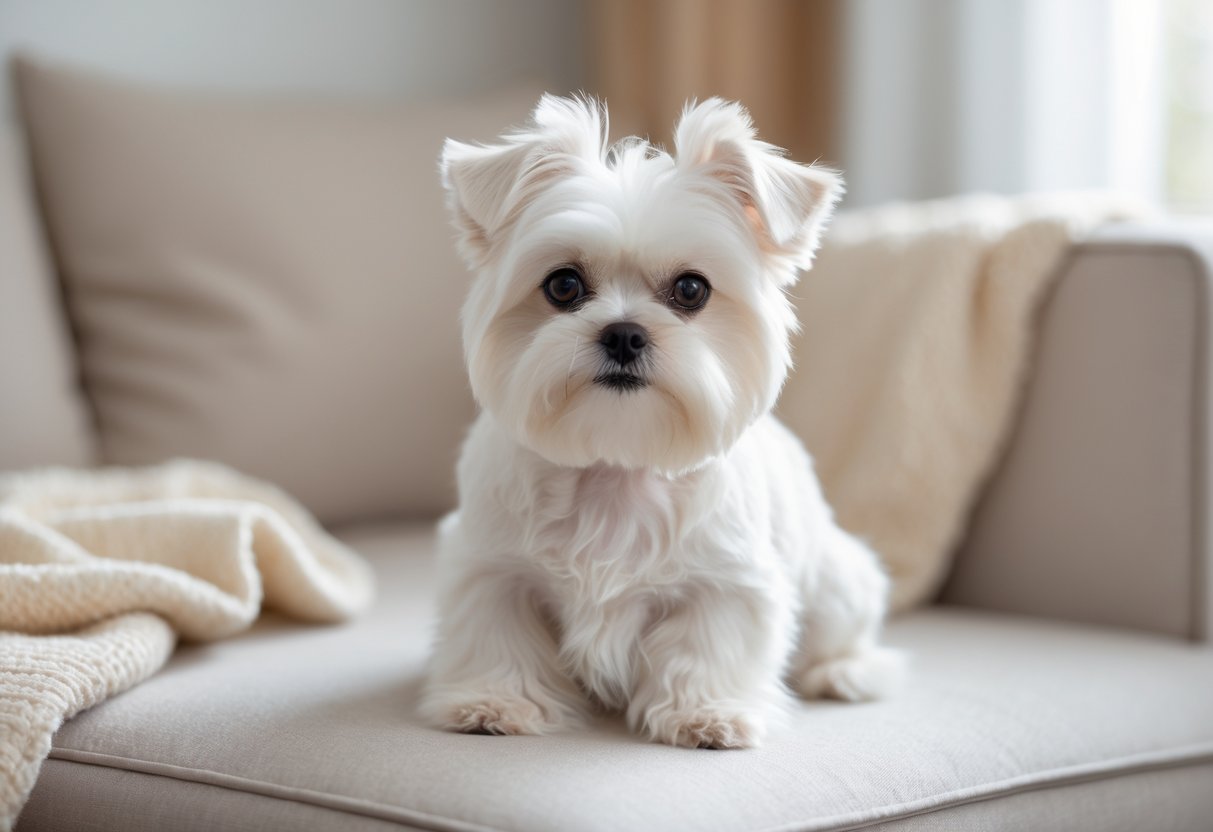
Maltese dogs are known for their gentle and playful nature. Their care requires attention to grooming and health. Costs vary based on breeder and location. Lifespan and health issues can affect their quality of life. Differences exist between Maltese and Maltese Shih Tzu mixes.
What is the typical temperament of a Maltese dog?
Maltese dogs are affectionate and loyal companions. They form strong bonds with their owners and enjoy spending time with family. They are playful but gentle, making them suitable for older children.
They tend to be alert and intelligent. While wary of strangers, proper socialization helps them become friendly and well-mannered.
How much does a Maltese dog typically cost?
The price of a Maltese dog usually ranges from $800 to $2,500. Costs depend on factors like breeder reputation, lineage, and location. Additional expenses include grooming, food, and medical care.
What is the average lifespan of a Maltese dog?
Maltese dogs typically live between 12 and 15 years. With good care, some can live longer. Regular vet check-ups, a balanced diet, and proper exercise contribute to their longevity.
What are the common health issues faced by Maltese dogs?
Maltese dogs are prone to dental problems due to their small size. Regular teeth cleaning is important.
Other health concerns include patellar luxation and respiratory issues. Regular veterinary care helps catch and manage these conditions early.
How does a Maltese Shih Tzu differ from a purebred Maltese?
A Maltese Shih Tzu, also called a Mal-Shi, is a mixed breed. It usually has a softer, curlier coat compared to the purebred Maltese’s long, straight white hair.
The temperament can be a blend of both breeds, often friendly and adaptable. Physical size and grooming needs may differ from a purebred Maltese.
What are the grooming requirements for a Maltese dog?
Maltese dogs need daily brushing to prevent tangles and matting in their long white coats. Professional grooming every few weeks keeps their fur clean and trimmed.
Eye and paw hair should be trimmed regularly to avoid irritation. Bathing and dental care are also important parts of grooming.
